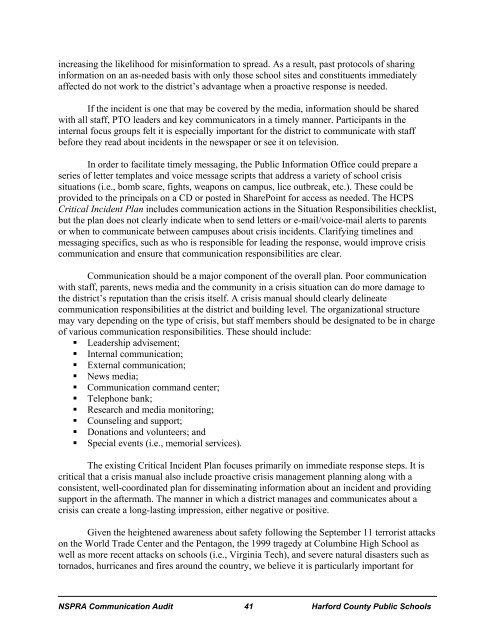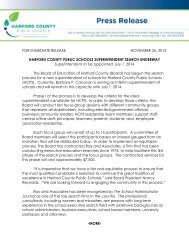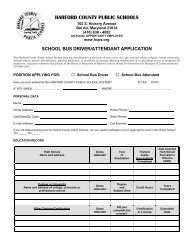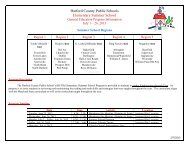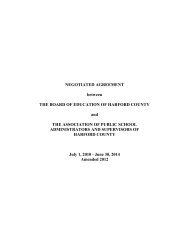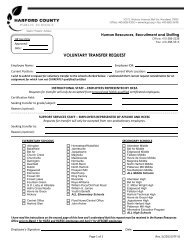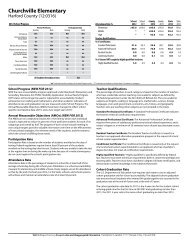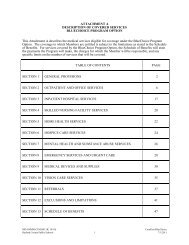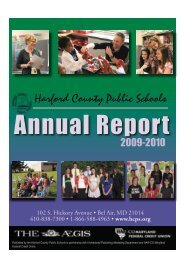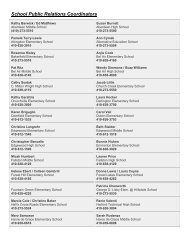NSPRA's Communication Audit Report - Harford County Public ...
NSPRA's Communication Audit Report - Harford County Public ...
NSPRA's Communication Audit Report - Harford County Public ...
You also want an ePaper? Increase the reach of your titles
YUMPU automatically turns print PDFs into web optimized ePapers that Google loves.
increasing the likelihood for misinformation to spread. As a result, past protocols of sharing<br />
information on an as-needed basis with only those school sites and constituents immediately<br />
affected do not work to the district’s advantage when a proactive response is needed.<br />
If the incident is one that may be covered by the media, information should be shared<br />
with all staff, PTO leaders and key communicators in a timely manner. Participants in the<br />
internal focus groups felt it is especially important for the district to communicate with staff<br />
before they read about incidents in the newspaper or see it on television.<br />
In order to facilitate timely messaging, the <strong>Public</strong> Information Office could prepare a<br />
series of letter templates and voice message scripts that address a variety of school crisis<br />
situations (i.e., bomb scare, fights, weapons on campus, lice outbreak, etc.). These could be<br />
provided to the principals on a CD or posted in SharePoint for access as needed. The HCPS<br />
Critical Incident Plan includes communication actions in the Situation Responsibilities checklist,<br />
but the plan does not clearly indicate when to send letters or e-mail/voice-mail alerts to parents<br />
or when to communicate between campuses about crisis incidents. Clarifying timelines and<br />
messaging specifics, such as who is responsible for leading the response, would improve crisis<br />
communication and ensure that communication responsibilities are clear.<br />
<strong>Communication</strong> should be a major component of the overall plan. Poor communication<br />
with staff, parents, news media and the community in a crisis situation can do more damage to<br />
the district’s reputation than the crisis itself. A crisis manual should clearly delineate<br />
communication responsibilities at the district and building level. The organizational structure<br />
may vary depending on the type of crisis, but staff members should be designated to be in charge<br />
of various communication responsibilities. These should include:<br />
• Leadership advisement;<br />
• Internal communication;<br />
• External communication;<br />
• News media;<br />
• <strong>Communication</strong> command center;<br />
• Telephone bank;<br />
• Research and media monitoring;<br />
• Counseling and support;<br />
• Donations and volunteers; and<br />
• Special events (i.e., memorial services).<br />
The existing Critical Incident Plan focuses primarily on immediate response steps. It is<br />
critical that a crisis manual also include proactive crisis management planning along with a<br />
consistent, well-coordinated plan for disseminating information about an incident and providing<br />
support in the aftermath. The manner in which a district manages and communicates about a<br />
crisis can create a long-lasting impression, either negative or positive.<br />
Given the heightened awareness about safety following the September 11 terrorist attacks<br />
on the World Trade Center and the Pentagon, the 1999 tragedy at Columbine High School as<br />
well as more recent attacks on schools (i.e., Virginia Tech), and severe natural disasters such as<br />
tornados, hurricanes and fires around the country, we believe it is particularly important for<br />
NSPRA <strong>Communication</strong> <strong>Audit</strong> 41 <strong>Harford</strong> <strong>County</strong> <strong>Public</strong> Schools


